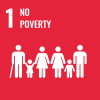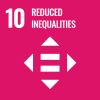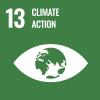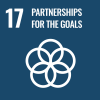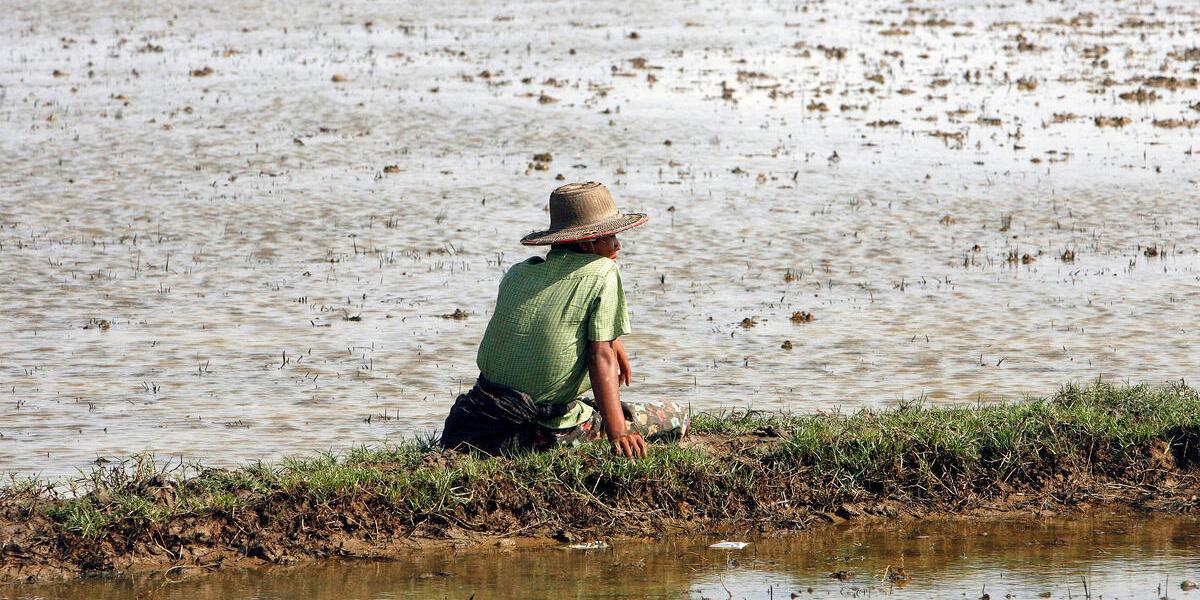
INTRODUCTION
Shocks and crises have become more frequent, intense and widespread in an interconnected world, affecting more people across the globe. Crises that might have previously remained relatively contained within a well-defined geographic region, are now propagated rapidly through globally interconnected systems and networks in areas such as economics, finance, the environment and health. The 2008 Global Financial Crisis is an example of how financial shocks spread through the interconnected balance sheets of financial institutions, causing havoc around the world. The COVID-19 pandemic also shows how national health systems were unable to absorb the effects of the virus, which spread quickly through a dense global transportation network before disrupting highly concentrated economic and financial networks and killing more than 7 million people.
These crises have added to other major ongoing development challenges such as climate change, poverty, inequality, unemployment, and others, to put all countries, particularly vulnerable countries and social groups, in a perpetual crisis-fighting mode. Shocks have followed each other in quick succession, giving countries little time to recover and rebuild before they are faced with a new emergency. Converging crises uniquely challenge countries’ resilience, setting back progress across health, education, poverty, inequality, and other social development dimensions. They also drain scarce resources essential for coping with and responding to multiple crises.
As shocks and crises are becoming more intense and widespread, national policies and measures that advance social development, or secure it against disruptions, must be reviewed and complemented to ensure their continued effectiveness against a more uncertain future. Looking toward the Second World Summit for Social Development in 2025, this policy brief focuses on explaining how shocks turn into crises and how national policies, supported by the international community, can help counter shocks, build resilience, and advance social development objectives, namely eradicating poverty, promoting full and productive employment, and fostering social inclusion in times of converging crises.
UNDERSTANDING HOW CRISES EMERGE AND SPREAD
How shocks turn into crises
Shocks are sudden, fast-moving and often localized events such as natural disasters, financial distress, or disease outbreaks. They are dangerous on their own, but their potential to trigger a larger-scale crisis comes from their interaction with pre-existing underlying conditions (Figure 1).
Pre-existing stresses or underlying conditions include long-term environmental, economic, and social factors that increase susceptibility to shocks. For example, persistent economic inequalities and underdeveloped healthcare systems weaken a country’s resilience to public health emergencies. These emergencies in turn exacerbate inequalities and strain the healthcare system further. Similarly, poor environmental conditions, such as soil degradation or limited water reserves, make some regions more vulnerable to sudden changes in weather and to climate change, which can further worsen environmental degradation.
Crises are rarely the result of a single factor. Instead, they emerge when multiple stresses interact with each other and with shocks in a way that overwhelms the coping capacity of a system. These triggering factors are usually interlinked in complicated and complex ways and are likely to propagate in systems characterized by dense networks such as trade and finance. Through these networks, a crisis originating in one system can have a domino effect, leading to additional shocks to other systems. This can result in a cascading series of crises across multiple systems, amplifying the overall impact.
Extensive interconnections also offer pathways for shocks to exert a broader influence, not only within a system (for instance, among trade partners) but also across systems (such as between trade and financial markets). Consequently, the impact of a single crisis can ripple across diverse sectors, intensifying the overall effect. The dynamic and interconnected nature of global systems today makes it increasingly difficult to predict when and where these crises will emerge, making prevention and resilience-building even more vital.
Networks and interconnections contribute to the spread of crises, but are also key to mitigating them
In our highly interconnected world, crises no longer remain isolated around their points of origin. Instead, they easily propagate through complex global networks—economic, financial, environmental, and social systems. For instance, global financial systems are highly interlinked and, through these connections, a financial shock in one country can trigger crises across entire regions. The history of financial crises in the last decades have all followed a version of this story. The Mexican peso crisis of 1994, the Global Financial Crisis of 2008, and the eurozone debt crisis of 2010–2012 are just a few examples that started in individual countries and spread to markets around the world.
Trade networks are also deeply interconnected as was demonstrated by the effects of the invasion of Ukraine and by the COVID-19 pandemic. In both cases global supply chains were severely impacted, affecting everything from food security to manufacturing around the world.
The ease with which a shock is transmitted across a network depends on several characteristics. The density of the network, or the number and intensity of the interlinkages between participants, can either mitigate a shock or help it to spread. Normally a larger number of links helps to spread the impact of a shock across the network. However, when the size of a shock or the number of shocks becomes large enough, the density of a network helps to propagate shocks. Moreover, if the shock affects important parts of an already dense network, these large shocks can destabilize entire systems (Figure 2).
The ability of networks to spread and even amplify shocks means that even small countries at the periphery of the global financial and economic system are susceptible to shocks that originated in countries that are at the center of the global economic and financial system. For lower income countries, the implications are (and have always been) profound as they are particularly vulnerable to spillover effects. Their trade and financial ties with more developed nations makes them susceptible to second and third round effects of crises originating elsewhere. In these countries, the crises will affect the most vulnerable social groups disproportionately, as their coping mechanisms are often weaker, leading to potential long-term impacts on social development.
At the same time, networks can contribute to strengthening resilience by enabling sharing of resources, information, and risks. For instance, crop failure in one country can be ameliorated by a transfer from surplus production or stocks in another country in the same network; early sharing of the genome of the Sars-Cov-2 virus over the web was essential to the fight against the COVID-19 pandemic; and, well-functioning insurance mechanisms rely on networks to diversify risks. While networks can exacerbate crisis, they are also essential to the solution, and should be nurtured as part of the “step-change towards more effective, inclusive and networked multilateralism,” as called for by the UN Secretary-General.
THE IMPACT OF CRISES ON SOCIAL DEVELOPMENT
As shocks are leading to crises that are becoming more intense and frequent, the development prospects of countries are greatly impacted. The World Social Report 2024 estimates that due to multiple crises, there could be a cumulative loss of more than USD 50 trillion in global output in the period 2020-2030 (Figure 3). The projected global output in 2030 would be 7.3 per cent lower than the prepandemic projection. These adverse impacts have been disproportionately borne by the most vulnerable people and societies.
Persisting levels of poverty, inequalities, and gender gaps
During the COVID-19 pandemic, extreme poverty (people living on less than $2.15 per day) rose in many developing nations, increasing from 689 million in 2019 to 713 million in 2022. In the post-pandemic period, poverty rates tended to remain above pre-pandemic levels in low-income countries, even as they returned to pre-pandemic levels in most other countries. Countries in special situations, including LDCs and LLDCs, experienced a much higher rise in their poverty headcount ratios in 2021 compared to 2018.
It is important to note that, following a shock, households that may not have previously been living in poverty can subsequently find themselves in a poverty trap, thrust into chronic poverty because of self-reinforcing mechanisms and feedback loops. Some of these mechanisms include loss of human capital, loss of physical assets, destruction or deterioration of natural resources, and psychological feedback loops.
The crises also widened global income and wealth inequalities, fueling both inequalities within and between countries. Inequalities rose faster in low and middle-income countries (Figure 4), while inequality between countries increased for the first time in a generation (SánchezPáramo and others, 2021). As such, the world’s richest 10 per cent of the global population now earn 52 per cent of global income, while the poorest half earns just 8.5 per cent. Wealth is even more unequally distributed, with the poorest 50 per cent of the global population owning only 2 per cent of global wealth, while the richest 10 per cent own 76 per cent.
The COVID-19 pandemic also led to massive unemployment spikes across the world, with variations across gender. Women were more affected by unemployment than men, as globally, an estimated 64 million women lost their jobs during the pandemic—double the number of men—because women are more likely to work in informal, temporary and part-time jobs. The pandemic also added to the burden of unpaid domestic and care work, squeezing women out of the labour force. Employment gaps have also exacerbated gender inequality. It may now take an additional 137 years to eradicate extreme poverty for women and girls if this trend continues.
Long-term impacts of education disruptions
Another pathway through which crises lead to long-term impacts on social development is interruption in education, often experienced differentially across girls and boys. An estimated 147 million children missed more than half of their classroom instruction during the COVID-19 pandemic. This resulted in significant learning losses, particularly in mathematics and reading, and a greater economic divide between developed and developing countries. Economic losses due to pandemic-related education disruptions could amount to US$20.6 trillion globally. Learning losses, as well as health deterioration, are compounded, because crises limit public spending on these sectors as well—an effect that can persist even after the immediate shock has dissipated.
Persistent impacts of inflation and challenges to fiscal space
The recent crises have also led to inflation spikes triggered by supply chain disruptions, further exacerbating impacts on the most vulnerable. In 2023, global inflation averaged 5.7 per cent, disproportionately affecting those living in poverty and eroding real incomes, particularly in developing countries. The global economic response—led by major central banks—through interest rate hikes has compounded these issues by raising the cost of borrowing for developing countries, leading to further economic instability.
In addition to the direct social development impacts, crises also affect the ability of governments to invest in social development, leading to lasting negative impacts on vulnerable social groups. Considering the cumulative economic downturn and social measure to mitigate the impacts of recent crises, public debt has soared to unprecedented levels.
For instance, the sovereign debt of developing countries has risen to 93.2 per cent of GDP in 2023. As a result, many low-income countries now spend a significant portion of their revenues on debt servicing, leaving little room for essential services like health and education. This has worsened their fiscal health and limits their progress on the Sustainable Development Goals (SDGs).
IMPLICATIONS FOR NATIONAL POLICIES
With shocks being driven by a more complex and interconnected set of drivers, policies and measures that advance social development, or secure it against disruptions, must be reviewed and complemented as needed to ensure their continued effectiveness. There is a need to adopt holistic and adaptive approaches to crisis management. This requires not only addressing the immediate consequences of individual crises but also understanding and mitigating the compounding effects of multiple crises occurring in tandem.
Countries should collaborate to develop early warning systems that detect disruptions in economic networks as early as possible. Several multilateral and regional organizations already partly fulfil this function, for example the IMF through its surveillance activities. However, early warning systems need to monitor all key networks for them to be effectual and near-real-time indicators must be identified to flag signs of distress. Improving these systems further would enable prompt interventions to mitigate shocks and prevent contagion, calling for effective information sharing across nations and between public and private sectors. Government interventions may be essential when systemically important firms—whether from financial, economic or social perspectives—come under significant stress and are at risk of failing. Identifying such firms, especially in the non-financial sector, requires assessing both direct and indirect linkages within economic networks to better understand the potential contagion effects of a shock.
Social protection measures and insurance mechanisms are two essential national strategies that help support shortterm recovery and enhance long-term resilience, for example by protecting both human capital and natural capital. Yet, currently only half the global population is estimated to have access to at least one social protection benefit. Moreover, many women reach old age with few assets and limited savings and lack an adequate pension or social protection benefits. Gaps in insurance protection and coverage are large, particularly in developing countries and among vulnerable populations—with microinsurance, considered as especially effective for people living in poverty, reaching on average just 8 per cent of its target population. The new landscape of shocks and crises is posing additional challenges as losses increase and it becomes harder to estimate future damages and diversify risks.
Comprehensive social protection systems help protect human capital, reduce poverty, and create more equitable and stable societies, which are shown to be more resilient in times of crisis. Recent global crises, especially the COVID-19 pandemic, have shown that a swift roll-out of social protection initiatives is possible. Countries that have invested in social protection floors before crises emerge are best equipped to protect communities and individuals against shocks.
Adaptability and agility to rapidly implement additional social protection measures in times of crisis, such as social protection floors, guaranteed income, or emergency healthcare are also beneficial to resilience. Robust social protection
systems based on a human rights-based approach, and legally enshrined, can ensure continuity and predictability during crises. In this regard, well-targeted digitalization and technological innovation can help support inclusive, resilient social protection systems by providing rapid data and information on emerging issues and enabling rapid service delivery. Technologies that make use of more timely, granular and high-quality data can also increase ex ante risk awareness and preparedness and improve the functioning of insurance mechanisms.
Overall, political commitment in four specific areas can provide momentum for actions that can effectively prepare for the new risk landscape, by building resilience across interconnected networks and advancing social development:
1. Rework national strategies and policies to prioritize social development and accelerate SDG action, integrating a gender perspective. This includes enhancing social protection systems, legally enshrined, with a focus on vulnerable groups and building resilience in the face of climate change. Accelerating SDG progress while leaving no one behind through transformative action is essential to building resilience.
2. Adopt surveillance and early warning systems and capacity for prompt interventions to mitigate shocks and prevent contagion effects within the networks. Bolstered by information-sharing among and between countries, as well as formal safety-net programmes, these efforts help mitigate shocks and reduce the probability of them turning into crises.
3. Increase fiscal space through progressive taxation and well-regulated and innovative insurance mechanisms. Tax revenues can be increased through improved tax collection and tax reforms, including implementing progressive taxes. Insurance mechanisms that harness technology, bring together public and private stakeholders, and expand risk pools (at the national, regional and global levels) can enhance coverage and improve risk-sharing and diversification.
4. Reorient and enhance effectiveness and efficiency of government spending, for example by eliminating unproductive fossil fuel subsidies to free up funding for social development. Governments may also use digitalization and technology to increase program efficiency and reduce costs.
 Welcome to the United Nations
Welcome to the United Nations
